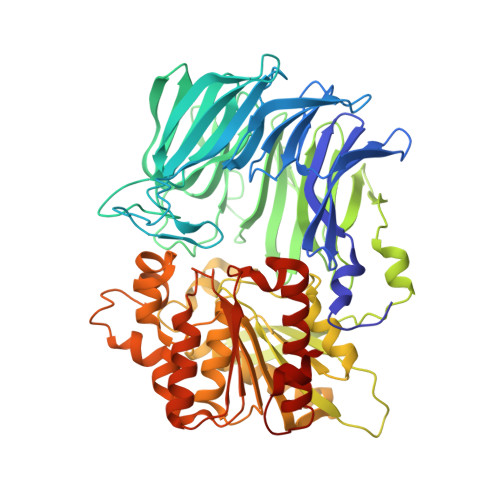A Self-compartmentalizing Hexamer Serine Protease from Pyrococcus Horikoshii: SUBSTRATE SELECTION ACHIEVED THROUGH MULTIMERIZATION.
Menyhard, D.K., Kiss-Szeman, A., Tichy-Racs, E., Hornung, B., Radi, K., Szeltner, Z., Domokos, K., Szamosi, I., Naray-Szabo, G., Polgar, L., Harmat, V.(2013) J Biological Chem 288: 17884-17894
- PubMed: 23632025
- DOI: https://doi.org/10.1074/jbc.M113.451534
- Primary Citation of Related Structures:
4HXE, 4HXF, 4HXG - PubMed Abstract:
Oligopeptidases impose a size limitation on their substrates, the mechanism of which has long been under debate. Here we present the structure of a hexameric serine protease, an oligopeptidase from Pyrococcus horikoshii (PhAAP), revealing a complex, self-compartmentalized inner space, where substrates may access the monomer active sites passing through a double-gated "check-in" system, first passing through a pore on the hexamer surface and then turning to enter through an even smaller opening at the monomers' domain interface. This substrate screening strategy is unique within the family. We found that among oligopeptidases, a residue of the catalytic apparatus is positioned near an amylogenic β-edge, which needs to be protected to prevent aggregation, and we found that different oligopeptidases use different strategies to achieve such an end. We propose that self-assembly within the family results in characteristically different substrate selection mechanisms coupled to different multimerization states.
- Protein Modeling Research Group, Hungarian Academy of Sciences, Eötvös Loránd University, Pázmány Péter Sétány 1/A, H-1117 Budapest, Hungary.
Organizational Affiliation:




















